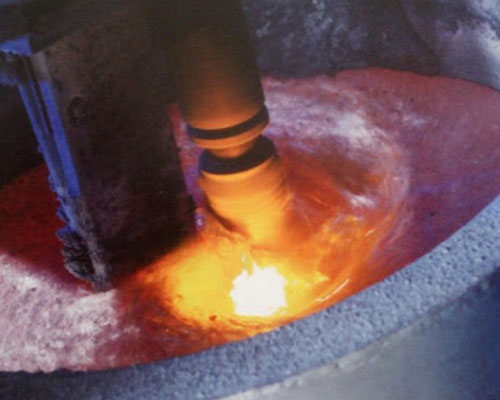It is well known in the field of aluminum casting that various surface defects formed during ingot casting, such as pits, vertical wrinkles, oxide plaques, etc., may develop into cracks during casting or subsequent processing. For example, in the subsequent rolling process, cracks in the ingot or slab can propagate, for example, leading to expensive remedial rework or complete scrapping of scrap materials. Most ingots are processed in some way. However, work cannot cure the cracked ingot. Surface defects of aluminum ingots are still a problem in the alloy field.
Processing refers to various operations well known in the metallurgical field, to name a few, including hot rolling, cold rolling, extrusion, forging, drawing, ironing, heat treatment, aging, forming, and stretching. When processing or forming alloys, energy is put into the workpiece, but it is not always evenly distributed.

There are many ways to promote alloy casting, such as direct cold casting (DC), electromagnetic casting (EMC), horizontal direct cold casting (HDC), hot top casting, continuous casting, semi-continuous casting, die casting, roll casting, and sand casting. Each of these casting methods has its own inherent problems, but for each technology, surface defects are still a problem.
Our company provides refining agents, online degassing and filtering equipment, ceramic foam filters, which can solve the surface defects of aluminum ingots for aluminum foundries by reducing gases, oxides, and other impurities in molten aluminum. We also offer casting launder, caster tips and nozzle, tap out cones, hot top casting parts, and others for aluminum casting, which can help reduce secondary pollution.
Minimizing the oxidation of molten alloy and surface defects in the final ingot can improve the recovery rate of aluminum alloy in various process steps. The improved recovery rate can reduce production costs and increase the output of production equipment. In particular, reduced oxidation results in reduced melt loss, which is a loss that occurs during melting, holding, and casting.

